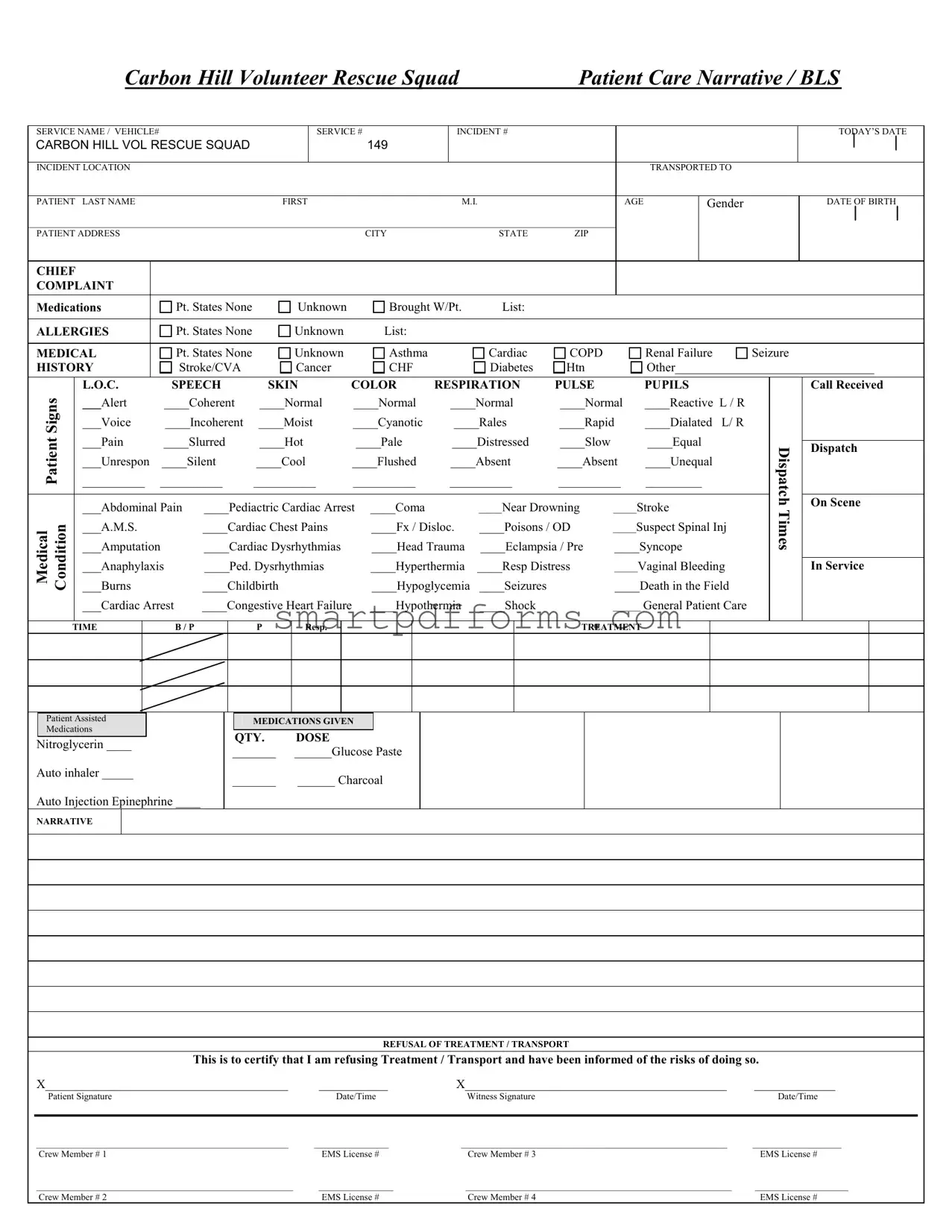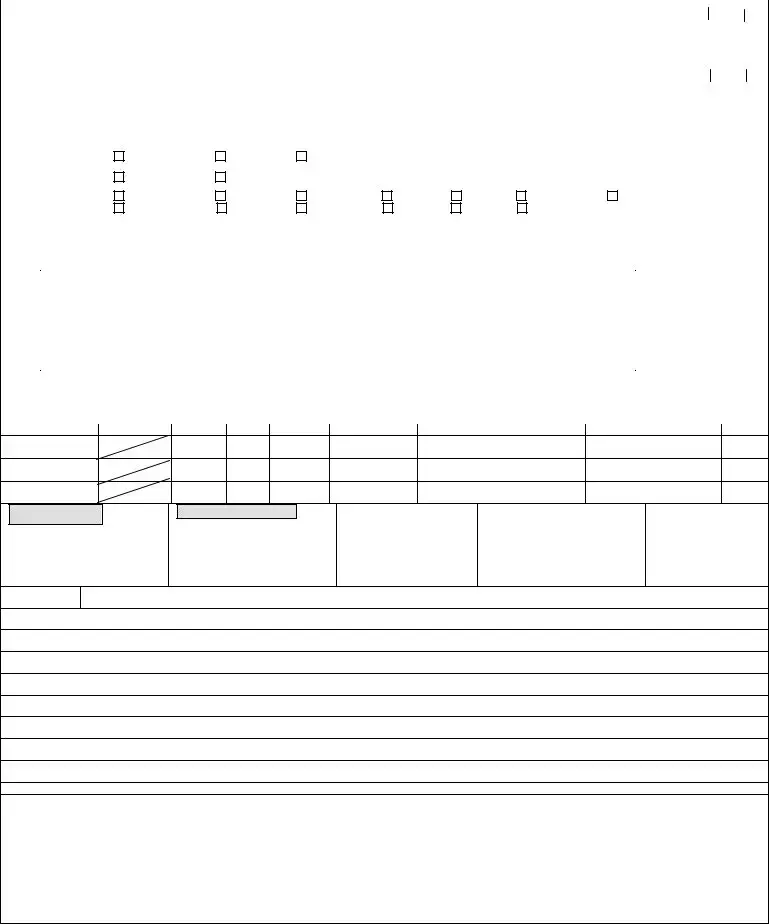In the critical encounters between emergency services and patients, the Patient Care Report form stands as an essential document, meticulously crafted to ensure every detail of the patient's condition and the care provided is accurately recorded. Originating from the Carbon Hill Volunteer Rescue Squad, this form encapsulates a variety of information: from basic identifiers like the service name, vehicle number, and incident number, to the more personal details of the patient such as name, age, gender, and medical history. It doesn’t stop there; the form delves into the chief complaint, allergies, and medications, offering a clear snapshot of the patient's health status at the time of the emergency. Additionally, it addresses the medical interventions and treatments administered, including but not limited to, medications given, the dosage, and the patient's response to the treatment. One of the form's critical aspects is the section dedicated to "Refusal of Treatment/Transport", which records a patient's decision to refuse care, ensuring that it’s made with full knowledge of the potential risks involved. This meticulous documentation is not only vital for the continuing care of the patient but also serves as a legal record that can be referred back to if needed. The signatures of the patient (or witness) and the crew members, alongside their EMS license numbers, authenticate the form, adding an extra layer of accountability and transparency to the emergency medical services provided.

